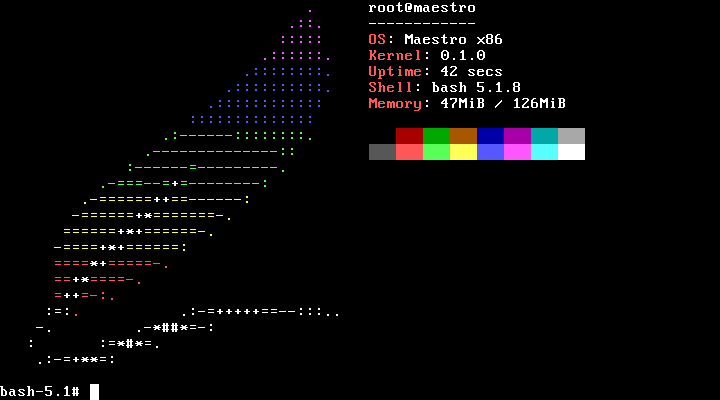Enter Maestro, a unix-like monolithic kernel that aims to be compatible with Linux in order to ensure wide compatibility. Interestingly, it is written in Rust. It includes Solfége, a boot system and daemon manager, maestro-utils, which is a collection of system utility commands, and blimp, a package manager. According to Luc, it’s creator, the following third-party software has been tested and is working on the OS: musl (C standard library), bash, Some GNU coreutils commands such as ls, cat, mkdir, rm, rmdir, uname, whoami, etc… neofetch (a patched version, since the original neofetch does not know about the OS). If you want to test it out, fire up a VM with at least 1 GB of ram.



It’s interesting, but with Linux and BSD already available in many different flavours do we really need it?
I mean what use case would it be better in except maybe an extreme rust enthusiast.
Asked no programmer ever before starting a project
If it’s cool (as this is), then yes. It’s needed :-)
It isn’t needed to be required for one to like developing it.
With minix already available I see no reason why we need a Linux kernel
Whats the need for it? Another great operating systems engineer emerging from it even though the project itself might not be ‘useful’. You only truly learn stuff when actively doing it.
One day he might be a significant contributor to Linux!
It was the first fully working kernel licenced under a FOSS licence. So it was the first time someone could run a 100% open source OS.
At least since maybe some really old mainframe back when stuff came with source code
But, but… rust?!!
it’s not that everybody should work solely on what you deem useful/needed, eh